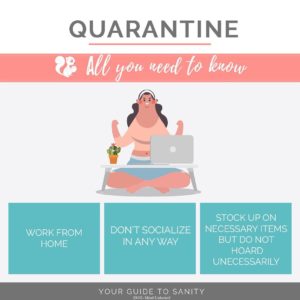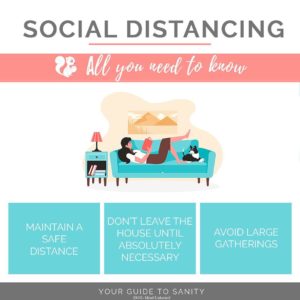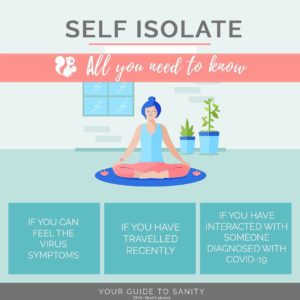With COVID-19 (coronavirus) pandemic all over the news, we all have come across terms like ‘quarantine, self-isolation and social distancing’. If you are still not sure what the difference is, then keep reading.
Governments use quarantine to stop the spread of contagious diseases, like the coronavirus. Quarantines are for who don’t necessarily have symptoms and applies to everyone. Quarantine keeps people away from one another, so they don’t unknowingly infect anyone.
While self-isolation serves the same purpose as quarantine, it’s reserved for those who are already sick. It keeps infected people away from healthy people to prevent the sickness from spreading.
Social distancing means keeping space between yourself and other people outside of your home, and limiting your time in public places.
QUARANTINE

The technology and fast transport has increased human interaction much more than it used to be. People travel at the blink of an eye and with people, this virus travels. This is how it has reached so many parts of the world and affected millions in different ways.
World Health Organization (WHO) has repeatedly underlined the importance of “flattening the curve” in order to tackle the coronavirus outbreak, calling on countries around the world to impose sweeping public health measures.
Implementing a comprehensive approach, with the aim of slowing down transmission and flattening the curve is vital for every nation now. This approach saves lives and buys time for the development of vaccines and treatments.
How do we flatten the curve? In less than a month, the global number of confirmed COVID-19 cases doubled from about 75,000 cases on Feb. 20 to more than more than 3.5 MILLION today. That infection rate depicts how easily and quickly the virus has spread. As a result, hospitals reach their capacity and are unable to treat everyone. Practicing self-quarantine (even if you are not sick) will further reduce the chance of you coming into contact with someone who might be carrying the virus and may not show symptoms. Thereby, flattening the curve, since people won’t get sick all at once. The progression of the virus slows down.
Lets stay at home. Lets flatten the curve. This is our chance to save the world and be heros!
SOCIAL DISTANCING
This is one of the few times we all are stronger, not together, but away from each other. This is where social distancing comes in. COVID-19 is a virus that is spread by humans themselves. The only way to stop it is for the humans to stop interacting with each other. All of us together have to practice social distancing at every step.
Stop going out:
- In any large gatherings
- Cinemas
- Malls
- Restaurants
- Friends’ and family’s houses
- To visit older people or children
Only go out when necessary:
- For medical need or providing care
- grocery
- Walking/exercising alone
If you have to be around people, keep 6 feet (2 meters) between you and others. Wear a cloth face mask in public, especially in places where it’s hard to maintain at least 6 feet of distance between yourself and another person.
SELF ISOLATION
Self Isolation is when you not only stop going out, but completely isolate yourself from others even at home. The purpose it serves is to prevent the spreading of COVID-19 any further.
It is vital to practice self-isolation if:

- You have travelled anywhere recently
- You live with, provided care for, or spent extensive time with someone who has tested positive for COVID-19, OR is suspected to have COVID-19, OR who has respiratory symptoms (fever, cough, or shortness of breath) that started within 14 days.
- If you are not feeling well and having even the slightest symptoms of the virus.
Particularly if you have vulnerable people living with you, sleeping in a separate room, using separate bathrooms and cleaning up properly after every time you use common spaces is important. In short having least contact with anyone, even family!
Any waste such as tissues should be double bagged and kept apart from normal household waster for 72 hours before it is disposed of.


